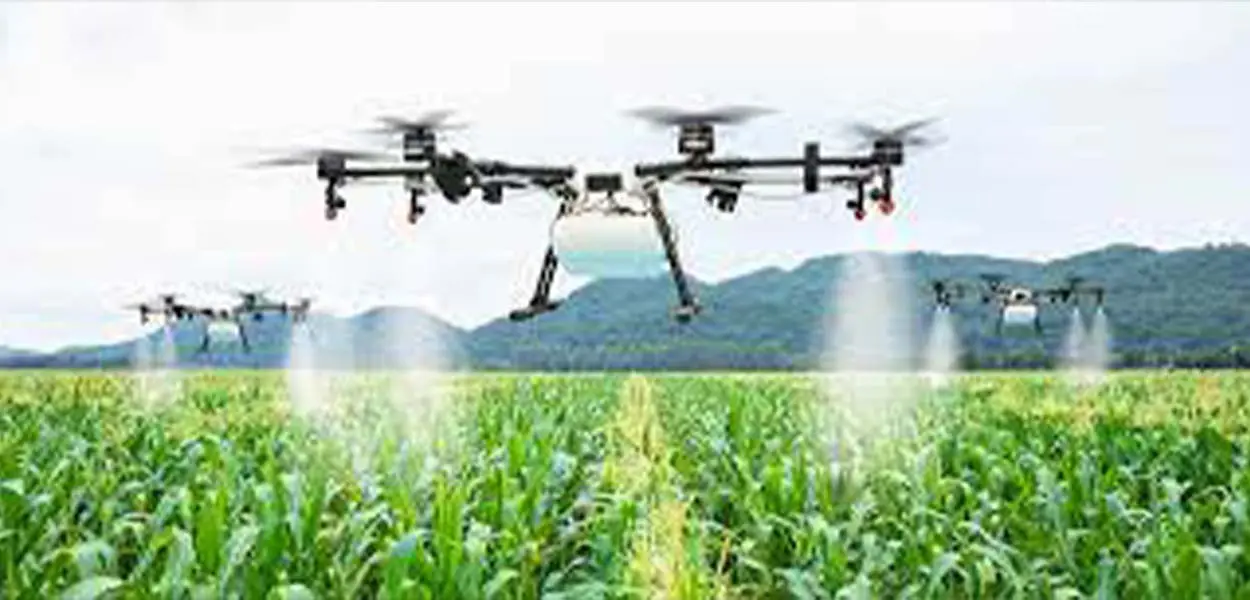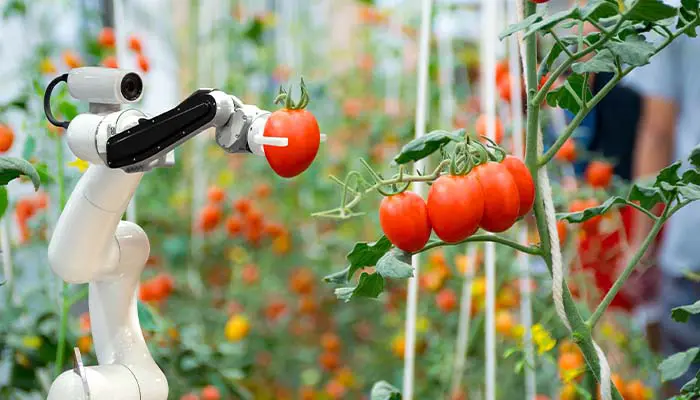Smart Agriculture Monitoring System - PerfectionGeeks
What is a Smart Agriculture Monitoring System?
March 13, 2023 03:30 PM
Smart Agriculture Monitoring System - PerfectionGeeks
March 13, 2023 03:30 PM

In the midst of all the IoT-enabled solutions, smart agriculture monitoring systems are definitely the most prominent. Since it is one of the major industries in world economics, the agriculture sector is one of the fastest-growing areas in terms of IoT adoption.
In light of these prospects, the need for monitoring agriculture is hard to ignore. It is evident that firms that are able to meet the increasing demands for organic food products with the help of agricultural monitoring will be able to gain an edge in the market.
The world has arrived at the understanding that technological advancement will drive the pace needed to meet the demands for food from this huge number of people. A climate-smart, precision agriculture solution is a result of this technology. Smart farming IoT solutions Or smart agriculture systems in short. IoT plays a crucial role in this.
With the aid of sensors as well as data analytics, farmers will be able to gain invaluable information about what the constantly changing climate brings and have concrete insights, as well as automated fertilizer and irrigation schedules that will assist them in achieving the highest growth possible from their farms and maximize their AI-powered return on investment.
Agriculture is widely regarded as one of the most resource- and labor-intensive industries. The issues that the farmers are facing today include, but aren't limited to:
Agriculture as a business relies heavily on machines. Maintenance activities, even when scheduled on a regular basis, take time and can impact budgets, but they do not eliminate the unpredictable element. When a piece of equipment is accidentally taken out of service, the result is usually unexpected interruptions.
The plants that grow require water, but the amount of it varies based on the level of soil moisture. To gauge these levels, farmers must go out to the field and perform regular tests by hand. Alternatively, they can use the technology of smart sensing, which is much more precise, quick, efficient, and effective.
Inability to gather accurate information on soil humidity could cause underwatering or overwatering of plants. Plants that are not properly watered are weak and dry. However, overwatering can cause water loss and lead to unanticipated costs for water.
Every plant has an ideal timing for planting based on a wide range of environmental conditions. But, without precise information, it's usually difficult to accurately estimate the time needed to plant.
Soil temperatures and levels of moisture are the most important metrics farmers have to track to determine the condition of their crops and then take appropriate action. It's difficult to accurately measure them without IoT-enabled solutionmonitoring systems.
Effective pest control that includes identifying pests, their locations, activities, and patterns of behavior is another problem that farmers need to confront. This is also difficult to tackle without IoT solutions in agriculturefor pest control.

IBM predicts that the application of IoT will allow farmers to increase their production by 70% prior to 2050. Therefore, all in all, the future is bright. In one way or another, the IoT has a lot to provide in terms of easing the aches that farmers are accustomed to.
Agritech is a growing sector, and in the present, an array of farming technology that is smart allows farmers to tackle the challenges of their day. Planting, watering, collection, and pest control—monitoring of fields in agriculture provides various metrics that farmers can use to effectively manage their tasks.
Soil condition is an essential indicator that helps farmers choose the most suitable planting time as well as harvesting time. With IoT sensors that monitor soil conditions, farmers are immediately informed of salinity and soil water. Other indicators include air temperature and soil temperature. Being able to estimate them correctly allows farmers to plan their watering schedules and know when to anticipate pests.
Monitoring soil condition requires the use of both equipment and software to function in real-time and notify users of any significant changes.
One such option could be CropX, which is an agriculture-related technology platform for remote monitoring. It utilizes smart sensors for agriculture to gather data and cloud infrastructure to process and store it, providing data in a format that is readable on the user's smartphone or computer screen.
Monitoring the weather in the field of agriculture is among the most frequently used fields for IoT. Crop farm yields are heavily influenced by the volatile climate. Weather monitoring tools that are within the fields (such as those employed in weather stations) will alert farmers to changes in weather conditions, such as temperatures and precipitation, humidity, sun radiation, and the speed of wind.
When crops are growing and maturing, it is possible for a variety of things to go wrong. Diseases and pest infestations, as well as unfavorable environmental factors, can cause irreparable damage before farmers are aware.In crop monitoring, smart sensing technology gathers information about the health of the crop (temperature and humidity, as well as indicators of health) and permits farmers to make quick decisions should something happen to the crops.
Pest infestations are among the problems crop farmers experience regularly. Finding out when pests are present isn't easy; it is also difficult to determine their activities, and finding out where they are located is usually impossible without frequent visits to the fields. Intelligent monitoring systems for agriculture address these challenges, but they also help to allocate the precise quantity of chemicals required to eradicate pests in every particular situation.
IoT pest detection devices like Strider detect insects and pinpoint their location in real-time with sensors and an insect camera to detect pests in the crop right in the field.
In addition to weather and crop monitoring, monitoring tools for agriculture are also finding wider use in the field of livestock farming. SCR is a different company that specializes in remote monitoring for agriculture, using cow neck collars to monitor cow health, location, and activities. Remote sensing in the field of agriculture, when combined with the most advanced analytical software, provides information on cattle nutrition and the health of the whole herd.
It is essential that such systems make use of advanced software for data analysis and seamlessly integrate with procurement and accounting databases to give insight and fully reveal the analytical capabilities of these systems.
Cropio and Farmlogs are two examples of companies that offer complete agritech solutions to manage remote farms based on IoT monitoring solutions for agricultural production.
Through making farming more connected and efficient, precision agriculture reduces total costs and enhances the quality and quantity of the products, the sustainability of agriculture, as well as the experience of consumers. Increased control over production can lead to more efficient budgeting and reduce waste.
The ability to identify irregularities in the growth of crops or the health of livestock, for example, reduces the chance of losing production. Furthermore, automation increases efficiency. Through smart devices, several processes can be in operation simultaneously. Automated services improve the quantity and quality of the product by ensuring that production processes are properly controlled.
Smart farming systems also allow for the precise management of the demand forecast as well as the timely delivery of products to the market, thereby reducing the amount of waste.
Precision agriculture is centered around managing the land supply and, depending on its situation, focusing on the correct growth parameters , such as water, fertilizer, or content, to ensure that there is enough production of the appropriate crop in high demand. The varieties of precision farming methods used are dependent on using software in business management. Control systems monitor sensors, and provide remote data to supply and support decision-making as well as the automated operation of machinery and equipment to respond to new issues and provide production support.
Intelligent farming, as well as IoT-driven agriculture are laying the foundations for the "third green revolution," which is the combination use of both information and communication technologies.
IoT technology aids in better controlling farming processes, reducing risk to production, and improving the ability to predict the results of production, which can help farmers better plan and distribute the product. The information about precise amounts of crops and the number of crops that are ready to be harvested can assist farmers in reducing the amount of time and effort required.
Team PerfectionGeeks Technologies has also contributed to the advancement of IoT applications for agriculture. The irrigation application powered by IoT, GreenIQ, assists gardeners in reducing the use of water by 50 percent, monitors humidity levels, and forecasts the optimal timing for irrigation. GreenIQ utilizes sensors that are smart to assess the weather conditions and soil types to create the best irrigation strategy , and adapt to changes in the environment.
The GreenIQ application is also compatible with the most popular home automation systems. This application is a significant contribution to eco-friendly gardening, and is one of the many examples of how intelligent agricultural products can transform the future of agriculture.
Strategy
Design
Blockchain Solution
Development
Launching
Testing
Maintenance
Contact US!

Plot 378-379, Udyog Vihar Phase 4 Rd, near nokia building, Electronic City, Phase IV, Sector 19, Gurugram, Haryana 122015
Copyright © 2025 PerfectionGeeks Technologies | All Rights Reserved | Policy
Strategy
Design
Blockchain Solution
Development
Contact US!

Plot 378-379, Udyog Vihar Phase 4 Rd, near nokia building, Electronic City, Phase IV, Sector 19, Gurugram, Haryana 122015

1968 S. Coast Hwy, Laguna Beach, CA 92651, United States
Copyright © 2025 PerfectionGeeks Technologies | All Rights Reserved | Policy